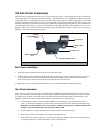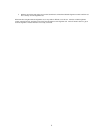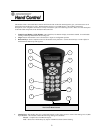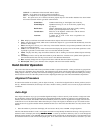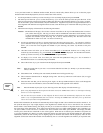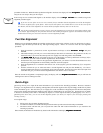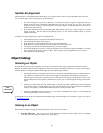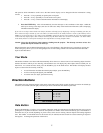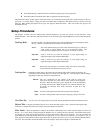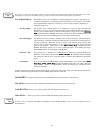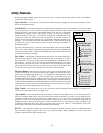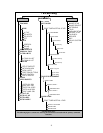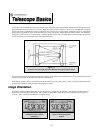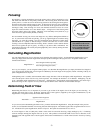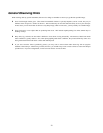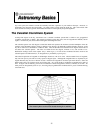18
•
Press the RATE key on the hand control. The LCD will display the current speed rate.
•
Press the number on the hand control that corresponds to the desired speed.
The hand control has a "double button" feature that allows you to instantly speed up the motors without having to choose a
speed rate. To use this feature, simply press the arrow button that corresponds to the direction that you want to move the
telescope. While holding that button down, press the opposite directional button. This will increase the speed to the
maximum slew rate.
S
S
e
e
t
t
u
u
p
p
P
P
r
r
o
o
c
c
e
e
d
d
u
u
r
r
e
e
s
s
The NexStar contains many user defined setup functions designed to give the user control over the telescope's many
advanced features. All of the setup and utility features can be accessed by pressing the MENU key and scrolling through the
options:
Tracking Mode
- Once the NexStar is aligned the tracking motors will automatically turn on and begin tracking
the sky. However, the tracking can be turned off for terrestrial use:
Alt-Az
This is the default tracking rate and is used when the telescope is placed on
a flat surface or tripod without the use of an equatorial wedge. The
telescope must be aligned with two stars before it can track in Alt-Az.
EQ North
Used to track the sky when the telescope is polar aligned using an
equatorial wedge in the Northern Hemisphere.
EQ South
Used to track the sky when the telescope is polar aligned using an
equatorial wedge in the Southern Hemisphere.
Off
When using the telescope for terrestrial (land) observation, the tracking
can be turned off so that the telescope never moves.
Tracking Rate
- In addition to being able to move the telescope with the hand control buttons, the NexStar will
continually track a celestial object as it moves across the night sky. The tracking rate can be changed
depending on what type of object is being observed:
Sidereal
This rate compensates for the rotation of the earth by moving the
telescope at the same rate as the rotation of the earth, but in the opposite
direction. When the telescope is polar aligned, this can be accomplished
by moving the telescope in Right Ascension only. When mounted in Alt-
Az mode, the telescope must make corrections in both R.A. and
declination.
Lunar
Used for tracking the moon when observing the lunar landscape.
Solar
Used for tracking the Sun when solar observing using a proper solar filter.
View Time-Site
- View Time-Site will display the last saved time and longitude/latitude entered in the hand control.
Sidereal Time
–
Displays the Sidereal time for your current time and location. This is useful for knowing the right
ascension of celestial objects that are located on the local meridian at that time.
Filter Limits
– When an alignment is complete, the NexStar automatically knows which celestial objects are above the
horizon. As a result, when scrolling through the database lists (or selecting the Tour function), the NexStar hand control
will display only those objects that are known to be above the horizon when you are observing. You can customize the
object database by selecting altitude limits that are appropriate for your location and situation. For example, if you are
observing from a mountainous location where the horizon is partially obscured, you can set your minimum altitude limit to
read +20º. This will make sure that the hand control only displays objects that are higher in altitude than 20º.



